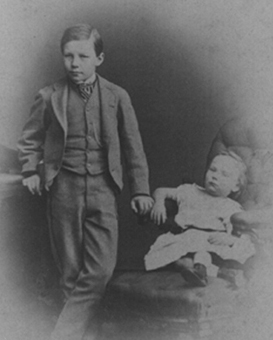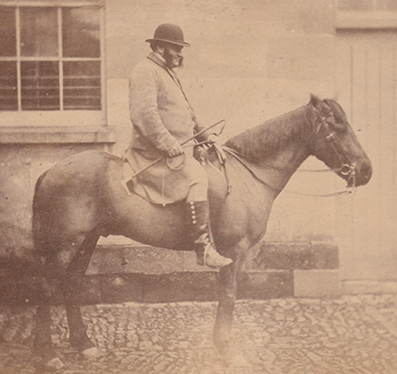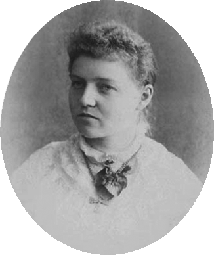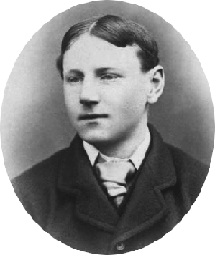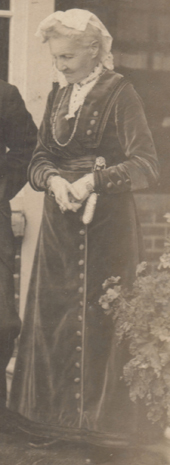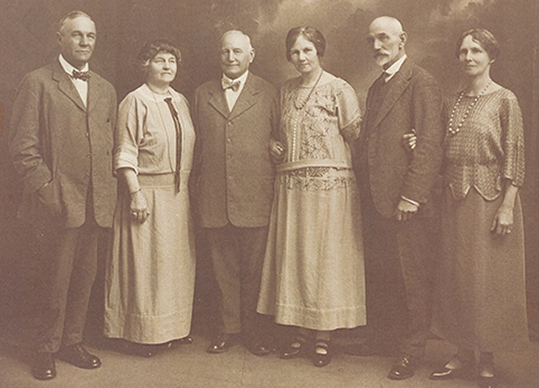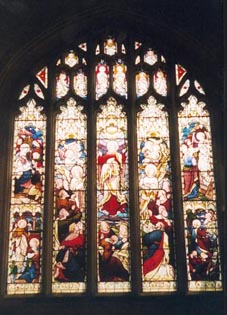|
Timeline 1837: William IV died of pneumonia at Windsor Castle on 20th June, leaving no legitimate children. He had served as King of England for seven years and was succeeded by his 18 year old niece, Victoria, who was crowned Queen of England on 28th June at Westminster Abbey, Middlesex. She was the daughter of Edward, Duke of Kent. 1838: Queen Victoria opened Hampton Court Palace to the public. 1854 - 1856: British soldiers were involved in the Crimean War, together with France and Turkey against Russian expansion. The costs of this war were terrible and thousands were massacred at the Battle of Balaclava. Those who survived either starved or froze to death while others died from cholera. 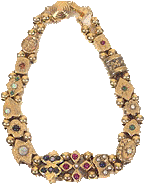 |
John Bayntun Starky squandered away, in six years, an enormous estate that took centuries to accumulate
John Bayntun Starky was born on 30th May 1834, at Spye Park House, in the county of Wiltshire and baptised on the 20th February 1835. He was the last Lord of the Manor of Bromham to live at Spye Park and own land at Bromham. His mother, Charlotte, took him to school for the first time in 1841. He was a clever child and very sensible at a young age and he would have been spoiled had he stayed at home. He was only 9 years old when his father, John Edward Andrew Bayntun Starky, died in 1843 and he inherited the Bayntun estates without any debts or mortgages, which was at the time, worth approximately one-third of a million pounds. In his younger days, his interest in the farm was very evident and he loved to check out the animals upon returning home for his school holidays each year. His grandmother, Maria Barbara Bayntun Rolt, described him as a most entertaining little boy. Later accounts say he was intelligent and friendly, generous to a degree, but had no money sense at all. He was educated at Eton College, where he is reported to have come into the hands of money lenders and was never able to properly get out of debt. He later became a landowner and farmer of 457 acres and employed 26 men and 7 boys at his Spye Park estate. John married Frances Anne Hunt Grubbe, the eldest daughter of the Rev. James Hunt Grubbe of Kensington, London. This marriage took place at Berrynarbor Anglican Church, Devon, on the 14th July 1857. They were both 23 years of age and went on to have seven children. An Indenture was drawn up a few days prior to this wedding, on the 11th of July 1857, between John Bayntun Starky and Frances Ann Hunt Grubbe, in consideration of their marriage which followed. This Indenture ensured that their heirs, if any, would be entitled to certain trust funds, which they had invested on certain mortgages in the name of Frances Anne, who was named trustee of this settlement. It made allowance also for an annuity which was to be paid to Frances Anne, should she survive her husband, and a further annuity to her husband's mother – Charlotte Starky – for her lifetime. A follow-up to this Indenture of Settlement was made some months after their marriage on the 18th day of November 1857. It was endorsed upon a previous Indenture of Mortgage for £13,000 made between the above parties dated the 31st day of December 1856.
The above family photos are the property of the Dalwood Restoration Association and I am grateful to Hugh Wyndham for permission to use the images in these pages. Their first child, George, was born on the 4th April 1858; a daughter, Eleanor, was born on the 7th November 1859; followed by another son, Walter on the 18th March 1861 and a year later, on the 14th March 1863, a third son was born, called Beauchamp (the last of the Bayntun Starky family to be born at Spye Park). John Bayntun Starky's interest turned to horses as his uncle was a successful owner and breeder of racehorses. He always carried a large hunting whip with a big lash and rode a black horse that looked like a packhorse with saddle-bags containing his wardrobe. He was one of the most unfortunate of those who had to do with racing, but was the origin of all the trouble he brought upon himself. He was markedly unostentatious in his mode of living and had no apparent means of spending £1,000 a year, yet in the course of 6 years he got rid of a fortune of £300,000. People blamed racing for his downfall, but he was never a heavy loser. He raced but a few years with a stud that might have been purchased and kept for about £20,000 and yet it is estimated that his winnings could well have been more than £25,000 which would have covered his expenses. His losses came from swindling money-lenders, giving deeds of his estate as security and friends who stole from him.
Eventually his debts snowballed to about £50,000 and for this his creditors foreclosed on him and all his estates were sold. The Crown Commissioners acquired most of the Bayntun Starky lands in lieu of debts on 19th December 1862. These lands are still the property of the Crown today. The rest, the mansion house at Spye Park, six farms, 50 houses and large tracts of land were sold by the creditors of John Bayntun Starky on the 3rd August 1864 to John Spicer. John Bayntun Starky received no money from this sale however, and Battle House too became the property of the Spicer family and from that date forward, his mother, Charlotte Wyndham became a tenant of John Spicer, but continued to reside at Battle House until her death. His grandmother, Maria Barbara Bayntun Starky, the heiress to the Bayntun fortune, was also alive at this time. There were jointures payable to his mother and grandmother and other elderly relatives out of his estate. His ancestors would have turned in their graves as he squandered away, in six short years, an enormous estate that took centuries to accumulate.
The family were forced to move after the sale of Spye Park in 1864 and they first went to a Hotel called "The Bustard" on Salisbury Plain and spent some time living in Salisbury. Then they went to Berkshire where the two youngest children born. According to the birth certificate of their next born daughter, Mildred, on the 5th April 1865, they were living at Freeland, Oxfordshire. Their last two children were born at "Longworth", Faringdon, Berkshire – Francis on the 25th May 1867 and Beatrice on the 7th March 1869. John Bayntun's will was proved on the 5th June 1873 (effects in England under £5,000). In 1870, accompanied
by two horses, including the famous Fisherman, John emigrated
to Australia where they became the ancestors of many racehorses. John Bayntun Starky was the owner of Fisherman during his racing career. The trainer was equally famous Matthew Dawson and the horse has been immortalised in a fine painting by the great English turf artist Harry Hall. A year
later, Frances Anne followed her husband to Australia. She left her two younger boys and the girls with her aunt, Ann Slade Gully, while George and Walter were at boarding school. She sent for them quite quickly and they were accompanied on the voyage by their nurse an her husband. They reached Australia about a month before John died. John Bayntunhad insured his life for a large sum of money.
The above photos were from the private album of Kate Forbes and were kindly donated by Bob Starky. By a deed enrolled in Chancery, dated 12 November 1887, Frances Anne, the wife of John Bayntun Starky (deceased), conveyed upon trust to the vicar and churchwardens of Rowde a piece of land in the parish, upon which had been built a Reading-Room, Coffee Tavern, and a cottage. The deed stated that the land had formerly belonged to Andrew Bayntun Starky, sometime Vicar of Rowde, who had devised it to the vicarage of Rowde. (He was most likely the son of John Edward Andrew Bayntun Starky and his wife Charlotte). This legacy was void and the land descended to John Bayntun Starky, who left it to his wife, Frances. She then had permitted Charlotte Starky, the mother of her late husband, to build the Reading Room, Tavern and cottage for parish use. The conveyance of 1887 made it a condition of the charity that no political meetings should be held on the premises. These buildings were later known as the Lecture Hall or the Institute.
Frances-Anne Bayntun Starky died on the 29th March 1921, aged 86 and was buried at Instow on the North Devon coast. Her will was proved on the 9th July 1921 (estate £2,394). She had been living with her daughter, Beatrice, at the time in a rented house, after her husband died.
When John Bayntun Starky died he was succeeded by his eldest son George Bayntun Starky |



